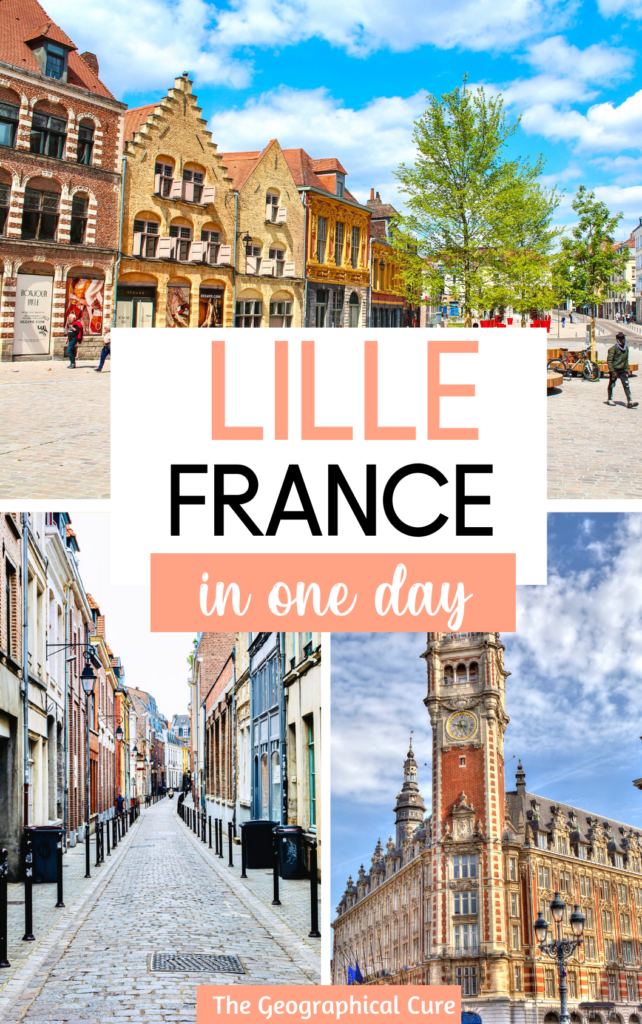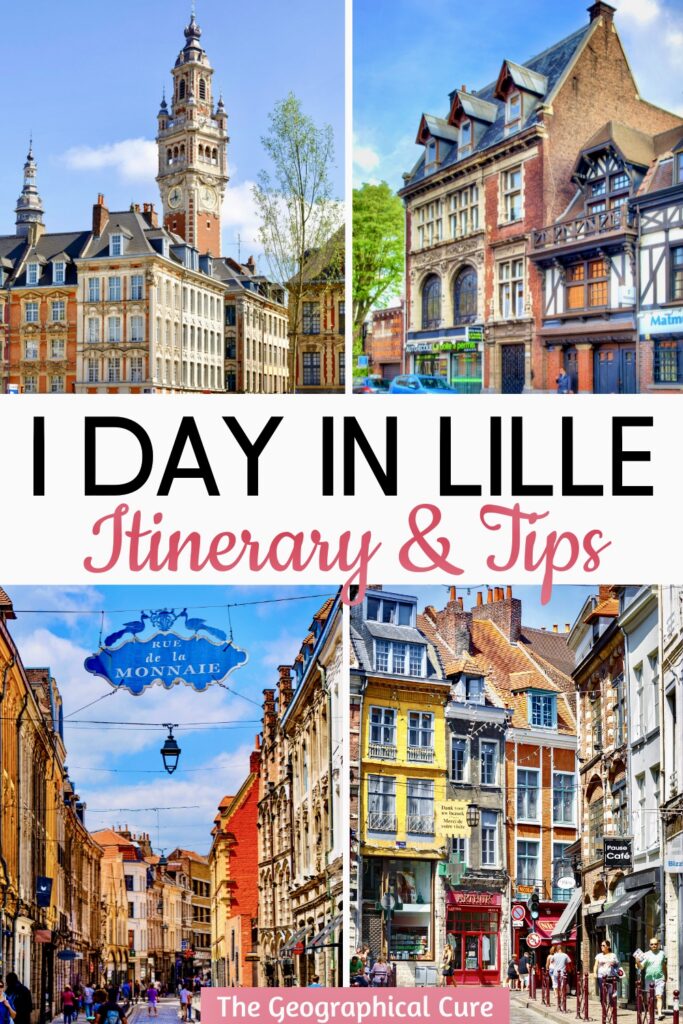Lille is one of France’s largest cities, located in the north in French Flanders. But you’d never know it!
The city center is chock full of chocolate box 17th and 18th century townhouses, giving it a village feel. They made me fall in love with the city straight away.
Lille has it all — medieval charm, a hopping craft beer scene, some seriously pungent Maroilles cheese, and restaurants galore.
But Lille is not just about old world charm. Lille is full of contemporary energy with festivals, breweries, and museums.
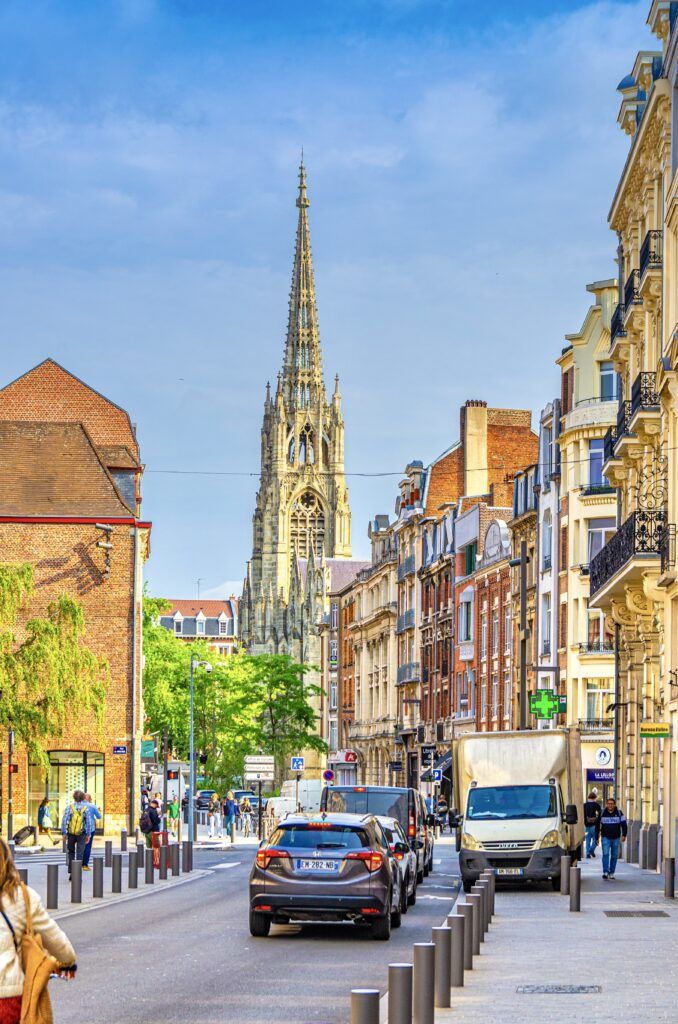
Snapshot of One Day In Lille
Here’s a quick glance of what you can see with this Lille itinerary:
- Grand Place
- Old Stock Exchange
- City Hall Belfry
- Palais des Arts
- Vieux Lille
- Churches
- Citadelle
Here are a few tours you may want to pre-book, especially in high season:
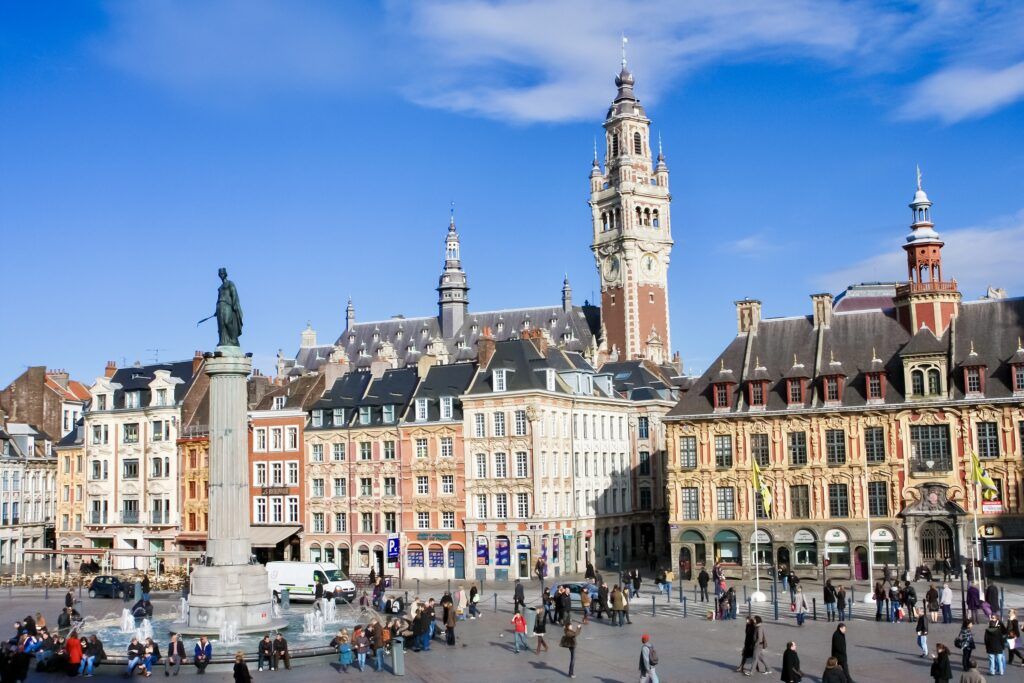
One Day In Lille Itinerary
Grand Place
Begin your day in the heart of Lille at the main square Place du Général-de-Gaulle, simply called Grand Place.
This exquisite plaza is surrounded by impressive Flemish Renaissance buildings, including the Vieille Bourse (Old Stock Exchange).
Enjoy a coffee at one of the many cafes around the square and soak in the vibrant atmosphere.
The statue in the center of the square is the Column of the Goddess. It commemorates the city’s resistance against the Austrian siege in 1792.
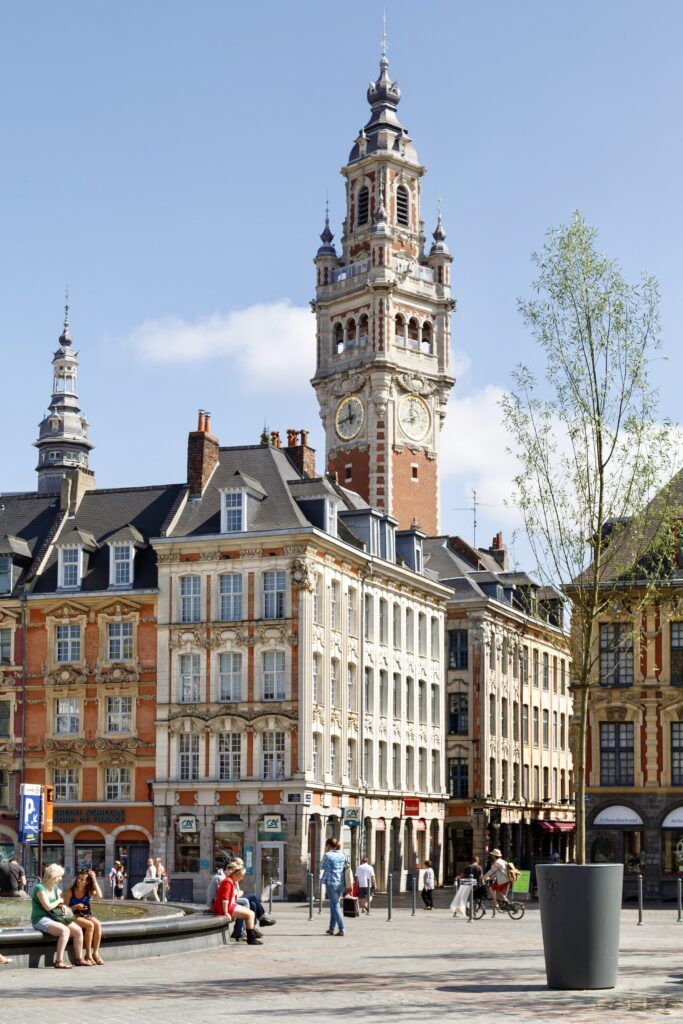
Old Stock Exchange
You can visit the Vieille Bourse, which is a splendid example of 17th century Flemish architecture. Built by Julien Desiree, it’s a gorgeous gold, red, and brown brick building made up of 24 identical private homes.
The facade of the Vieille Bourse is richly decorated with ornate sculptures, intricate carvings, and medallions, showcasing the craftsmanship and artistic prowess of the time.
The medallions feature portraits of famous Lille merchants, further emphasizing the building’s commercial significance.
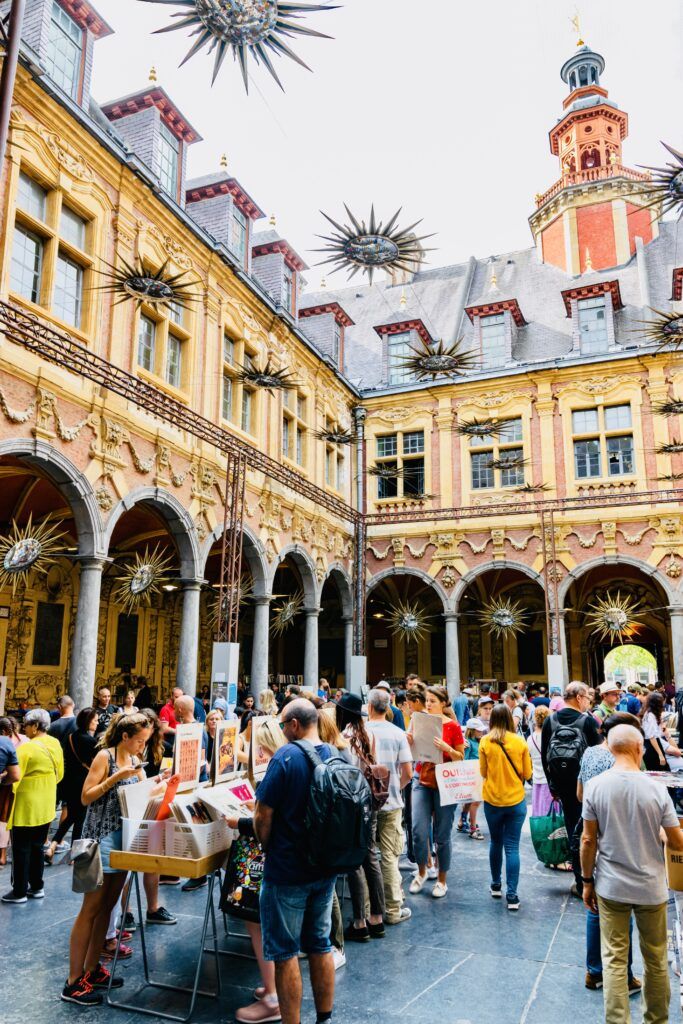
The inner courtyard is decorated with 24 Corinthian columns and a tasteful mix of brick an stone.
The courtyard is a meeting place for dealers of antique books. It often hosts book markets and flower stalls. It’s a perfect spot to browse through old books and enjoy the intricate details of the building.
Tip: The Bourse isn’t just a landmark. It also hosts performances and cultural activities, so you should check the website.
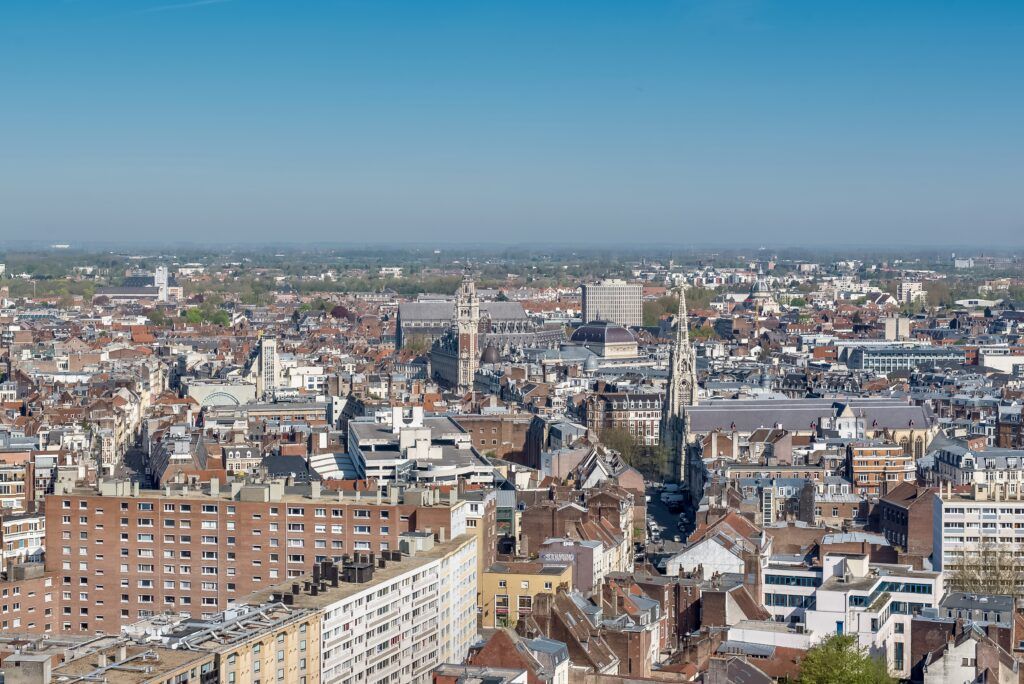
City Hall
Another must do in the old town is to climb the tower of the City Hall in Place Augustin Laurent.
To reach the top for a breathtaking view of the town, you’ll first climb 104 steps and then take an elevator.
An audio guide is available for a small fee of €2 and you can rent binoculars for €1 to enhance your experience. To enter, simply ring the doorbell.
>>> Click here to book a guided walking tour of Lille’s old town
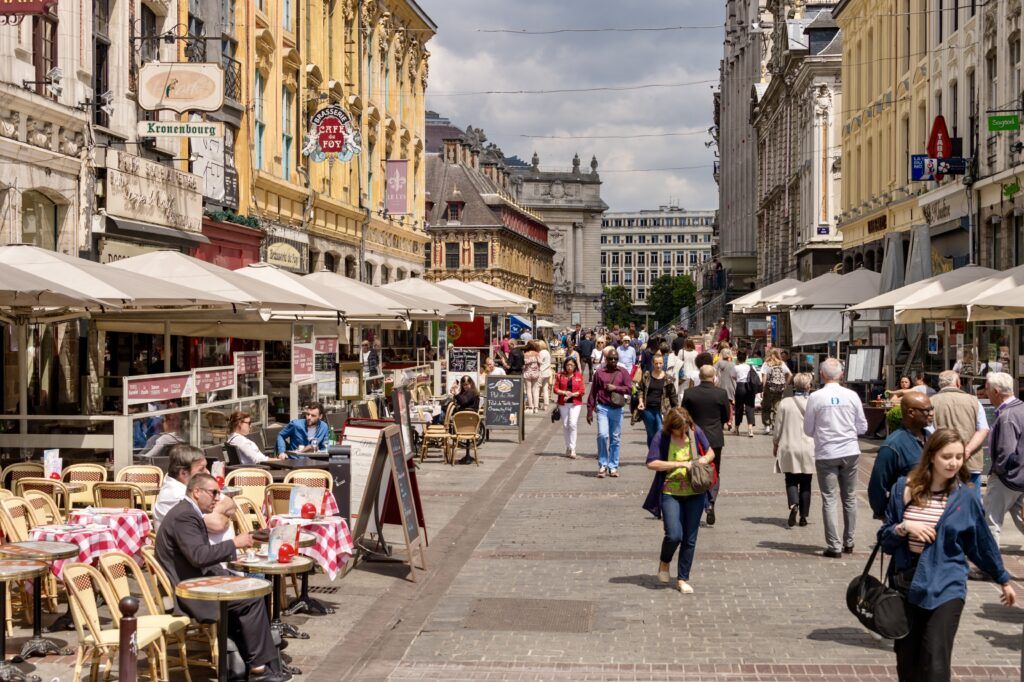
The Bourse is surrounded by enchanting alleys, old buildings, and picturesque squares.
A short walk from Grand Place, Rihour Square is home to the Palais Rihour, which houses the Tourist Office. It’s a retail area that often hosts fairs and festivals.
Pick up a city map or any information you might need for the day. The square is also a great place to admire more of Lille’s architecture.
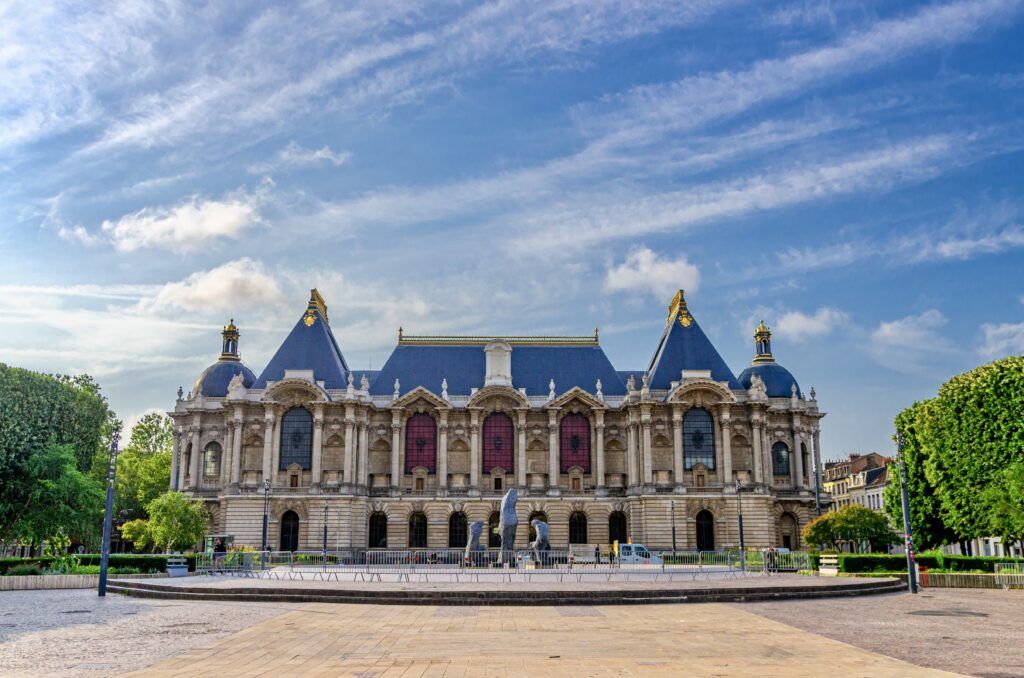
Palais des Beaux-Arts
Lille’s premiere museum, the Palais des Beaux-Arts, is an impressive cultural treasure. It’s the second most important museum in France after the Louvre!
It’s housed in a grand 19th century Beaux-Arts building, which combines elements of classical architecture with a grand, elaborate style.
Designed by architects Gaspard André and Edouard Bérard, the museum was inaugurated in 1892. It features a spacious, light-filled interior, making it ideal for displaying its vast collections ranging from medieval to modern art.
The museum displays a vast collection of European paintings, sculptures, and ceramics.
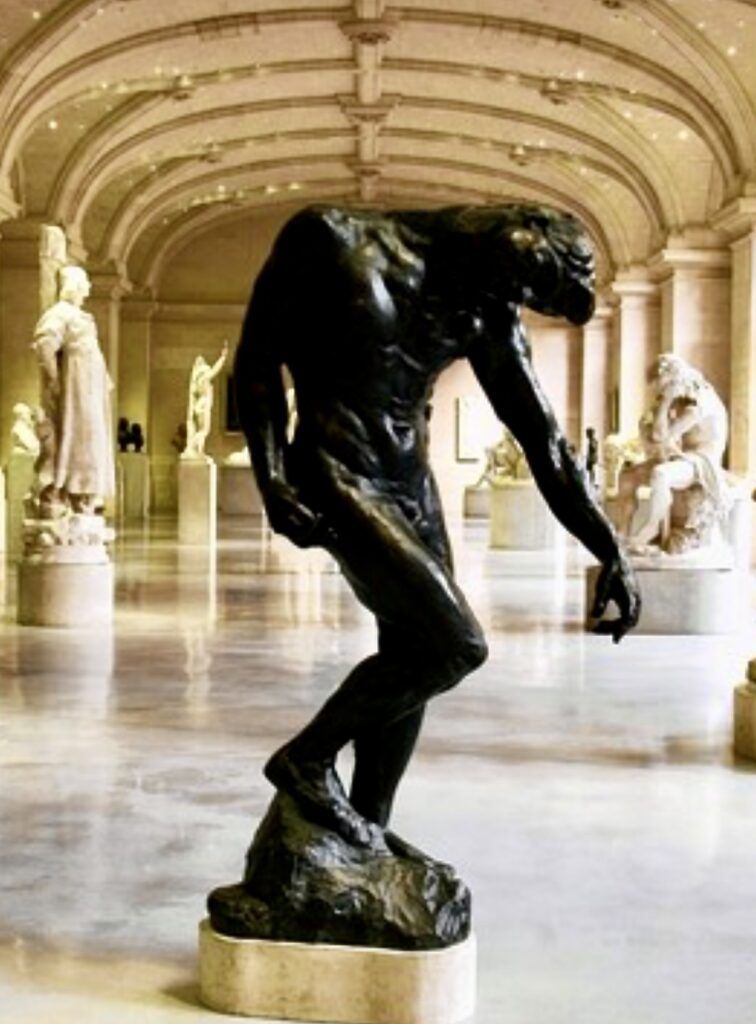
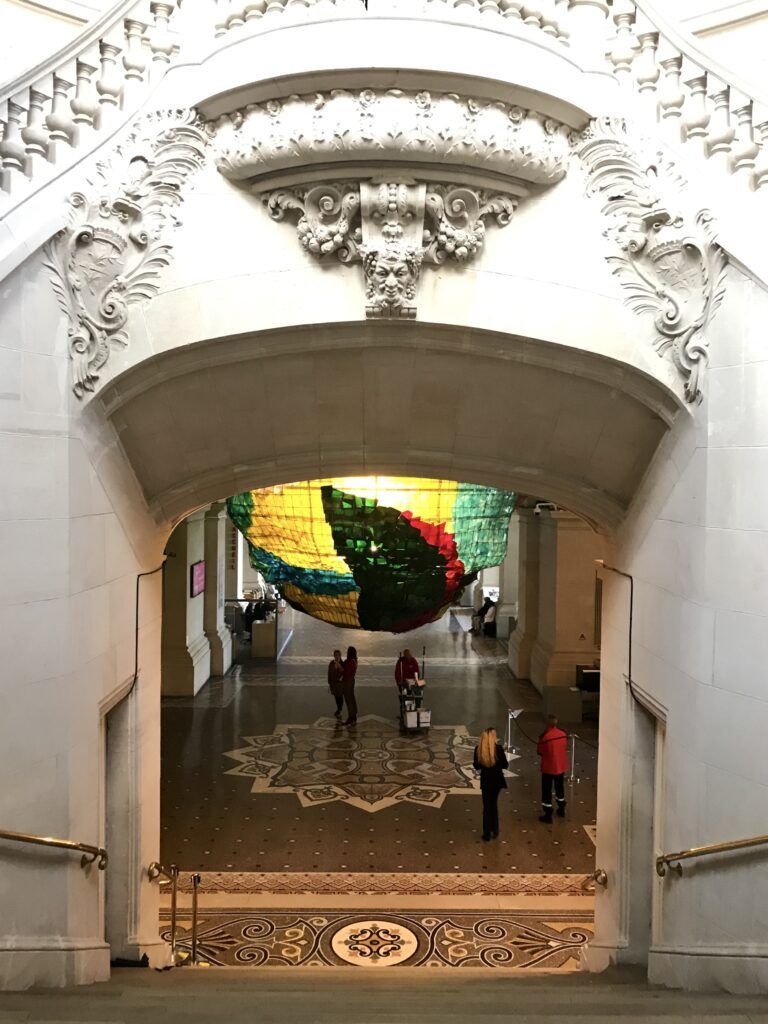
Spend a couple of hours marveling at works by Goya, Rubens, Rodin, Van Dyck, Delacroix, Manet, Bosch, and the Impressionists. I loved Delacroix’s Medea and Monet’s House of Parliament.
There are also some works by Flemish and Dutch masters, as well as quite a few Italian Renaissance paintings.
Tip: If you are planning on seeing most of Lille’s attractions, you may want to buy the 24 city pass to save time and money.
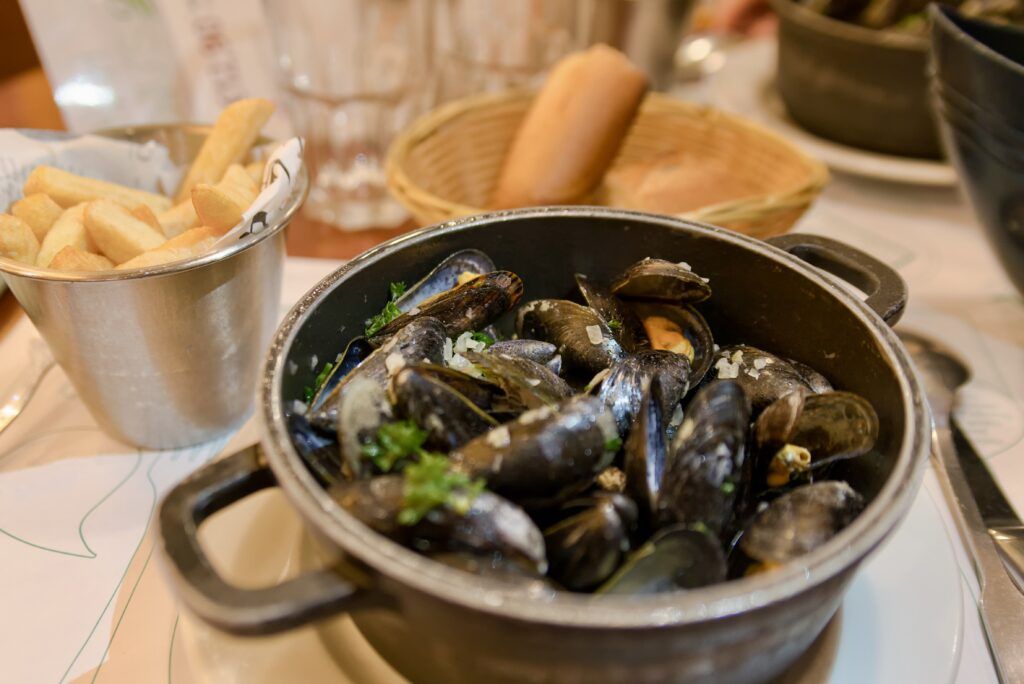
Lunch
Head to the charming streets of Vieux Lille (Old Lille) for lunch. This area is full of quaint bistros and restaurants serving traditional Northern French cuisine.
Try some local Lilloise specialties like carbonnade flamande (Flemish stew), moules-frites (mussels with fries), or potjevleesch (terrine with pig, rabbit, and chicken).
Another Lille delicacy is its stinky cheese called Maroilles. It’s an orange rinded pungent cow’s milk cheese. It’s served on its own or mixed with added goodies like gratins or tarts.
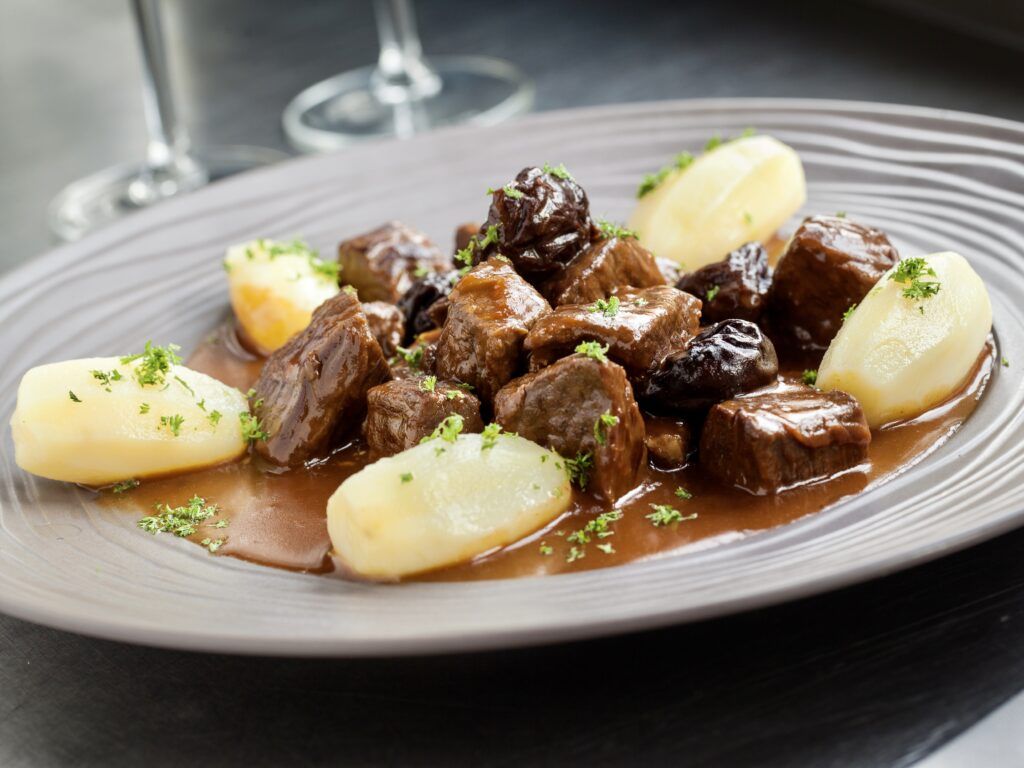
I can’t say I recommend the Lille sausages though. They seemed rather uncooked and had an odd, thready texture that put me off.
As another alternative, you’ll also find shops and cafes serving up gaufres, which are Lille’s delicious waffles. They are crispy and topped with powdered sugar or chocolate and whipped cream.
Two places to get your waffles fix are Meert and Waffle Factory. You can also check out Lille’s many bakeries.
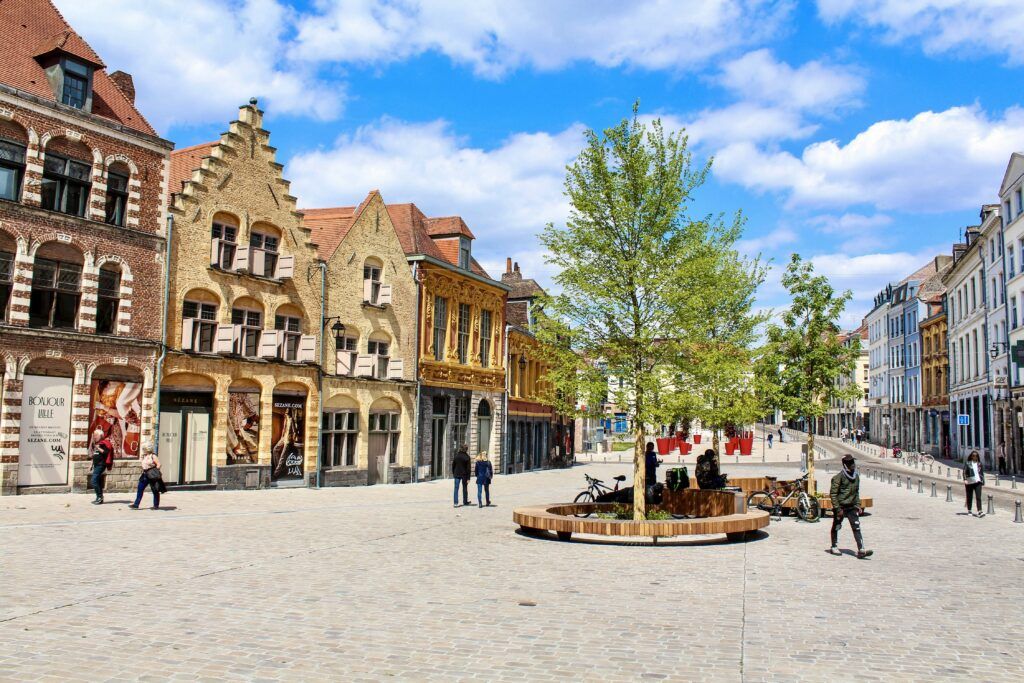
Vieux Lille
After lunch, explore more of the narrow cobbled streets of Vieux Lille. Admire the beautiful old buildings, chic boutiques, and art galleries.
Stroll down the Rue da la Monnaie, one of the city’s oldest streets, dating back to the 11th century. The buildings are in vivid hues of orange and red, and reminded me a bit of the city of Toulouse in southern France.
There are upscale eateries, chic boutiques and gorgeous architecture, including the Hôtel de la Monnaie, established by Louis XIV.
If you need a coffee, stop at Honore. It’s a quaint tea shop serving up delicious pastries.
Have a glass of wine at la Part des Anges or indulge in handcrafted chocolates at Mathilde’s Comptoir.
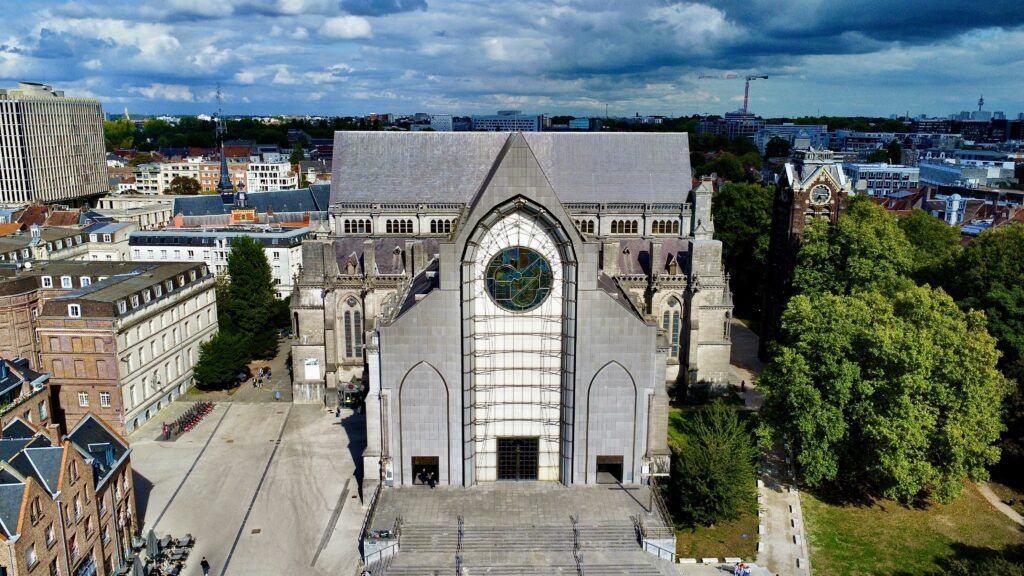
Notre Dame de la Treille
On your walkabout, don’t miss the Cathedral Notre Dame de la Treille, a beautiful basilica. It has a rather wacky modern facade, but the rest is Gothic Revival architecture. it’s recognized as a national monument.
The reason for the odd juxtaposition of old and new is that construction began in 1854 but wasn’t completed until 1999. The cathedral honors the Virgin Mary and is named after a 12th century statue known for its miraculous properties.
Saint-Maurice Church
Just a few minutes’ walk from Grand Place, you can admire the historic Neo-Gothic Saint Maurice church.
The church has a lofty nave, beautiful stained glass, and artworks. (It’s facade could use a power wash though.)
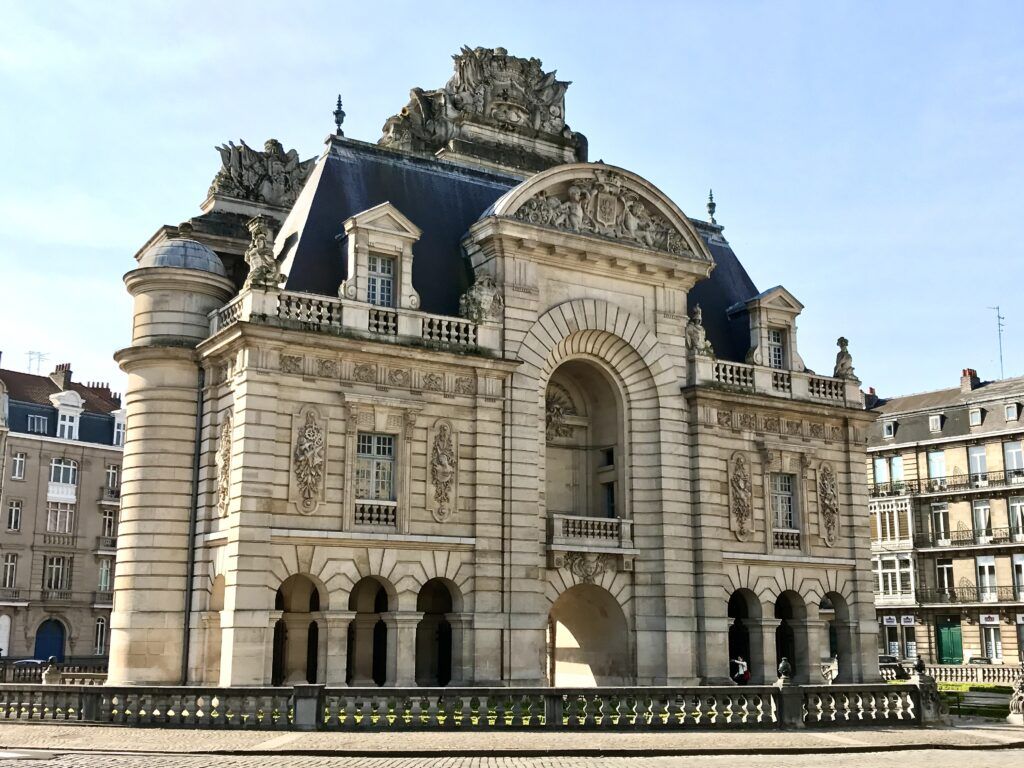
Citadelle de Lille
Take a relaxing walk to the Citadelle de Lille, a star-shaped fortress built in the 17th century.
The surrounding park, Bois de Boulogne, is a lovely place for a leisurely stroll. It has large lawns, avenues lined with trees, a lake, and even a small zoo.
Not far from the citadel is the Paris Porte. Part of Lille’s fortifications, this hidden treasure is a triumphal arch with elaborate detailing and sculptures.
For a more sedate option, you can take a stroll through the Jardin des Planets. This undiscovered treasure is incredibly peaceful, with ponds, pathways, and a wide variety of vegetation.
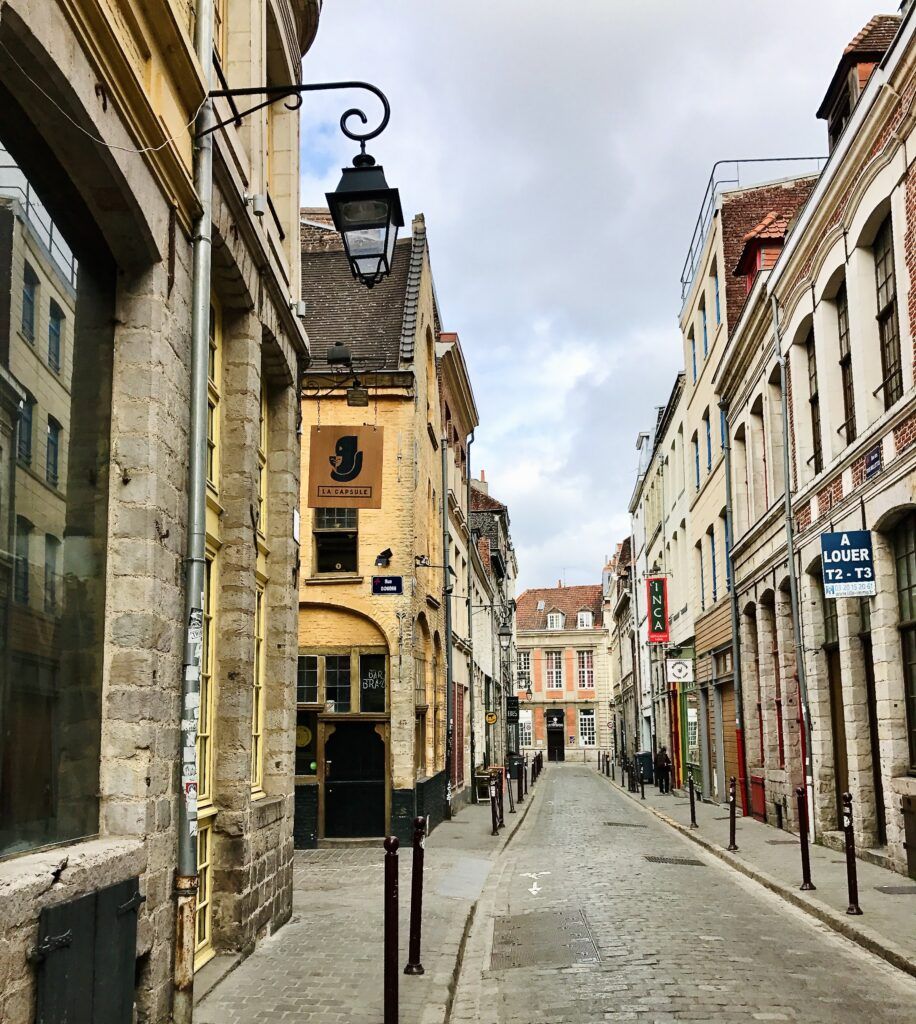
If you want a pre-dinner cocktail, Lille is awash in delightful bars. I really enjoyed Le Capsule, a rustic shrine to craft beers.
Quai Des Bananas is a funky cocktail bar with a wide choice of drinks. Le Dandy is a combination of old school and hipster chic.
For dinner, return to the city center or explore the bohemian Wazemmes district, known for its multicultural vibe and excellent dining options. You can find everything from traditional French to international cuisines here.
Tip: Wazemmes also has a lovely market, open on Tuesday, Thursday, and Sunday morning. If you are staying at at an Air Bnb, you can shop for fresh good to make your own seasonal feast.
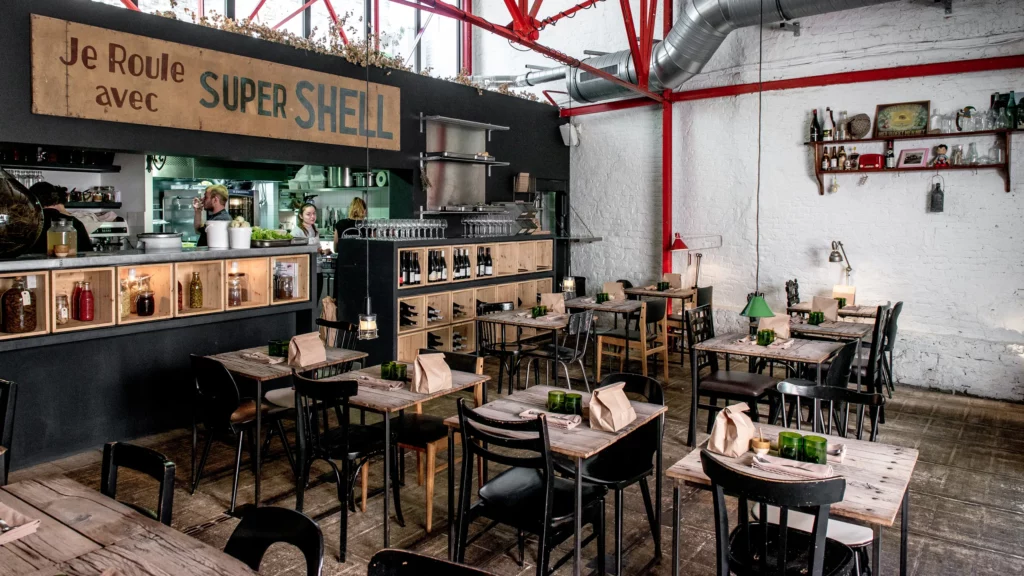
For a Michelin experience, try Le Bloempot. It’s one of Lille’s most famous restaurants. It’s a cozy and rustic spot serving up seasonal specialities.
End your day with a walk around the beautifully lit city center or along the Quai du Wault.
Alternatively, you may want to take in a performance. You have several options:
- Lille Opera (classical music, ballet, and opera)
- Theatre du Nord (theatrical events and modern plays)
- The Grand Bleu (avant garden modern pieces)
- The Magnificent (comedies & musicals)
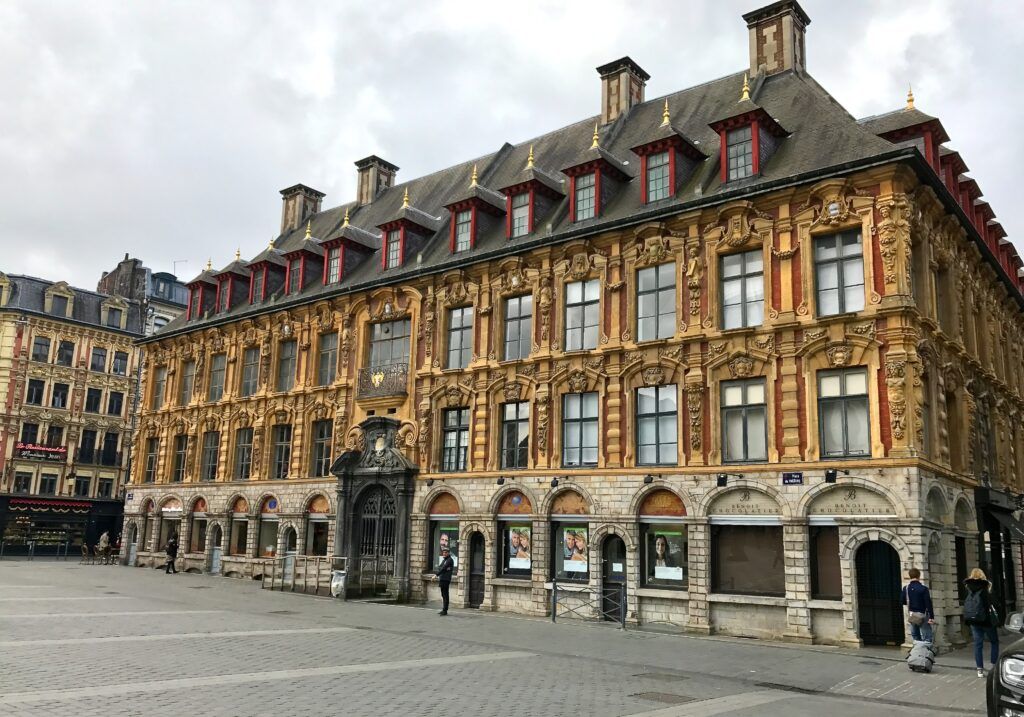
Tips For Spending One Day in Lille
How To Get To Lille
You can definitely do Lille as a day trip from Paris. It’s quite manageable thanks to the high-speed train service connecting the two cities. By TGV, the journey is only 1 hour.
Trains depart from Paris Gare du Nord, one of the main train stations in Paris and arrive at Lille Europe or Lille Flandres stations. Both are centrally located in Lille.
Given the short travel time, you can leave Paris in the morning, enjoy a full day in Lille, and return to Paris by evening.
You can also fly to Lille. The airport is less than 5 miles from the city center. You can take a shuttle bus, taxi, rent a car, or book a private transfer to your hotel.
If you are driving to Lille, you’ll find plenty of public parking spaces and garages. Driving also gives you the flexibility to take side trips to Bruges, Arras, or Ypres.
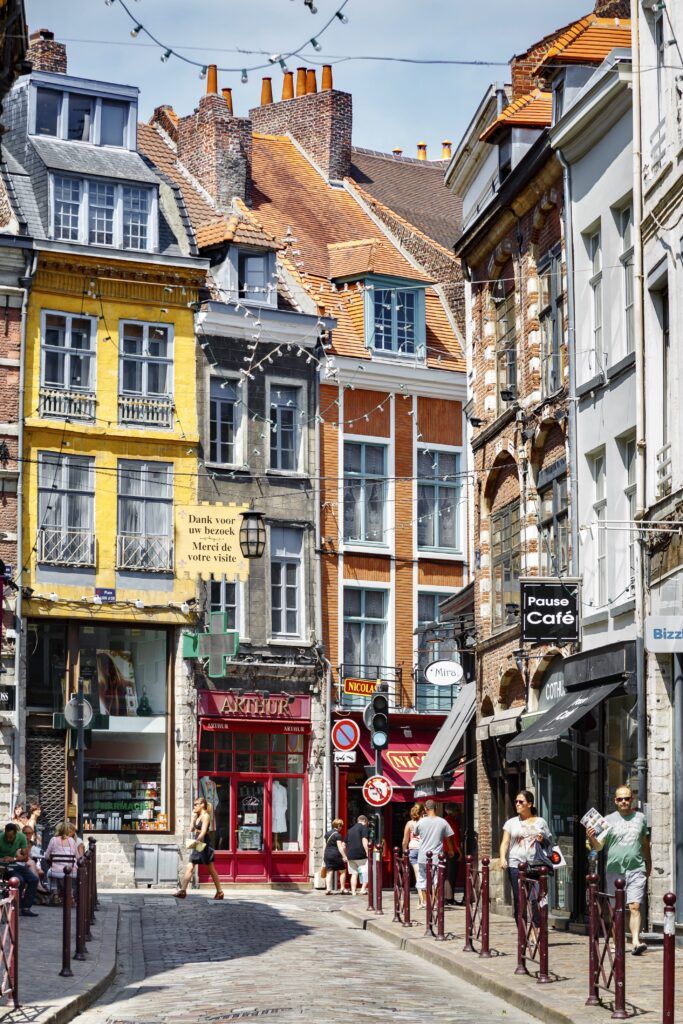
How To Get Around Lille
Lille is easy to navigate. It’s compact and most of the attractions can be easily reached on foot.
However, the city also has an efficient public transportation system, including buses and a metro, for covering longer distances. And taxis are easy to find.
When To Visit Lille
The ideal time to visit Lille depends on your personal taste. In the spring, Lille awakens with a symphony of blossoming flowers in parks and gardens. You may get some rain, but the city is splendid.
In summer, Lille hosts a number of festivals and is extremely vibrant. Plus, despite being high season, it won’t be nearly as crowded as Paris.
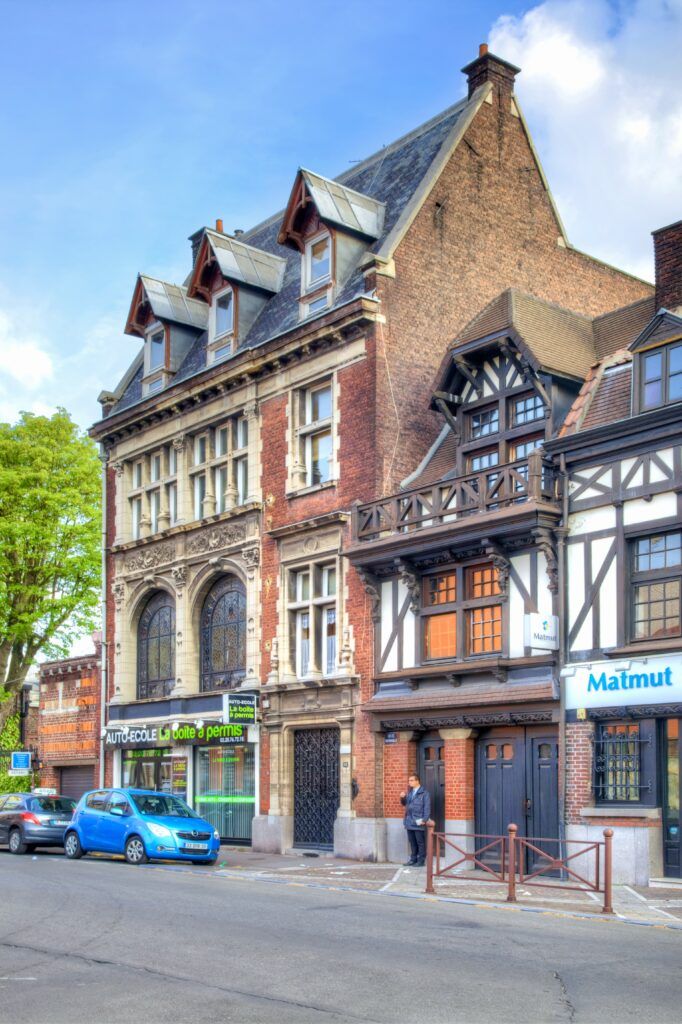
In fall, crowds recede and Lille is filled with beautiful fall foliage.
Winter is cold in Lille. After all it’s in the very north of France.
Still, there are Christmas markets and you can warm up with hot chocolate or mulled wine and enjoy the holiday decor.
If you’re interested in flea markets, you need to visit Lille the first weekend in September. That is when the Braderie de Lille takes place. It’s one of Europe’s biggest fleas and the city is transformed into an outdoor market.
Conversely, if you just can’t take crowds, stay away during this time as Lille’s population nearly doubles.
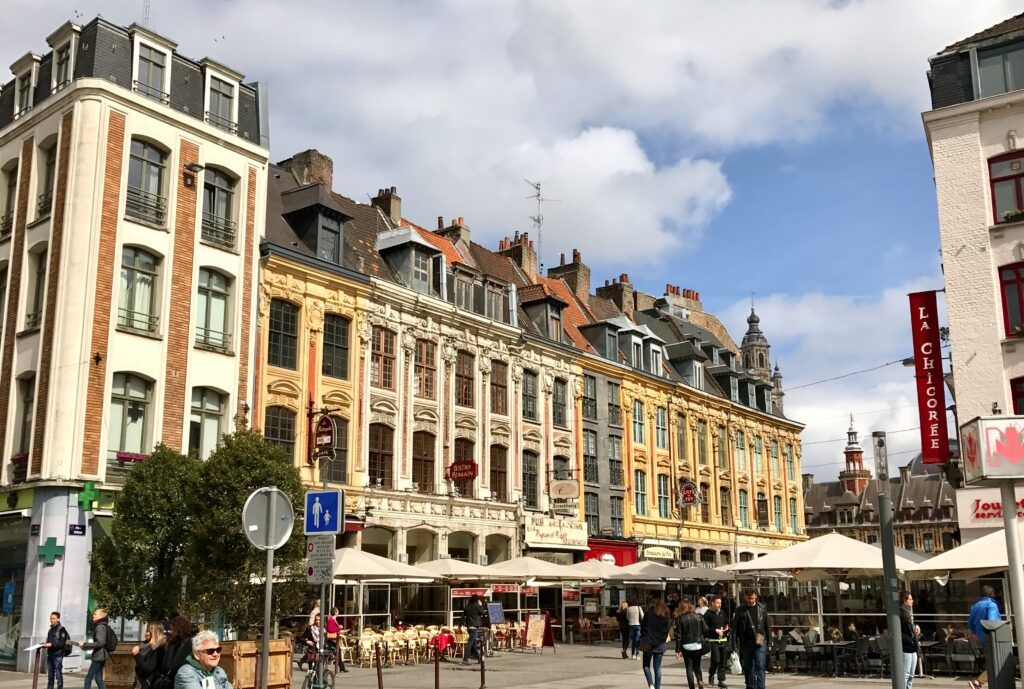
Where To Stay In Lille
You have plenty of options if you overnighting in Lille.
La Grand Hotel Bellevue is a luxury hotel offering up views of the Grand Place. Couvent des Minimes is a 4 star hotel near the old town located in a 17th century former convent.
For rewards members, L’Hermitage Gantois is a 5 star autograph Marriott hotel with a gourmet restaurant and spa.
On my last visit, I stayed in Clarance Hotel, a luxury boutique spot. It’s housed in an 18th century mansion. The hotel features 27 rooms and suites, each with its own personality. Plus, there’s a Michelin-starred gastronomic onsite.
I’ve also stayed in L’Esplanade Lille, a lovely and immaculate boutique hotel. It has spacious rooms and is a fairly easy walk to the city center.
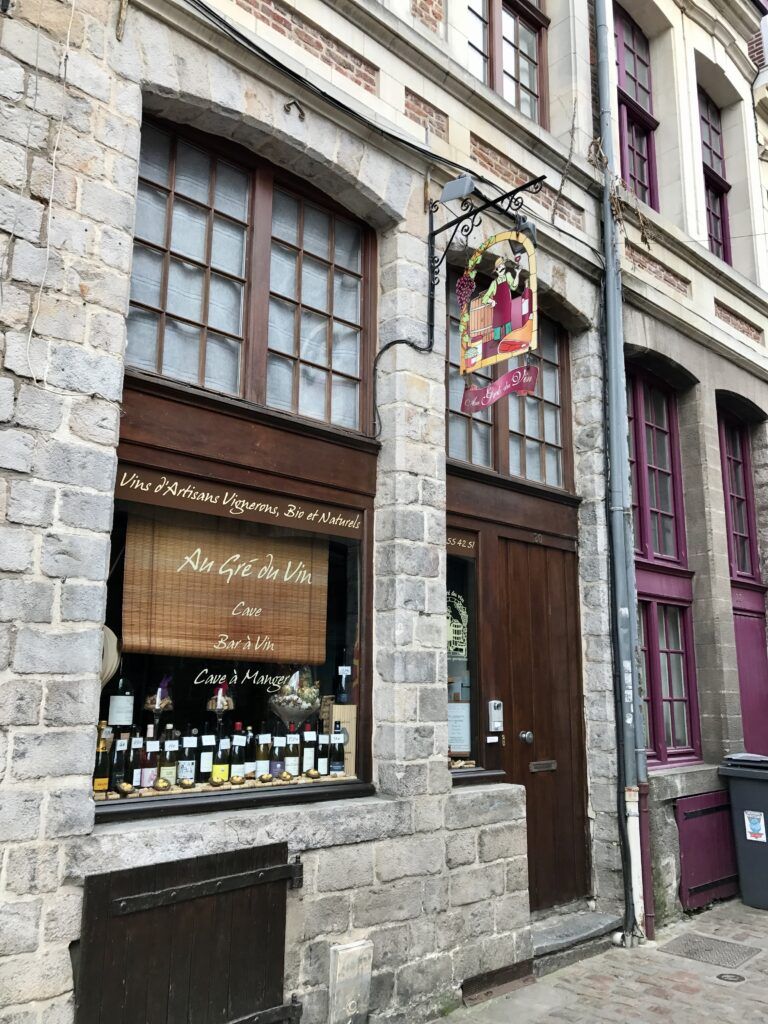
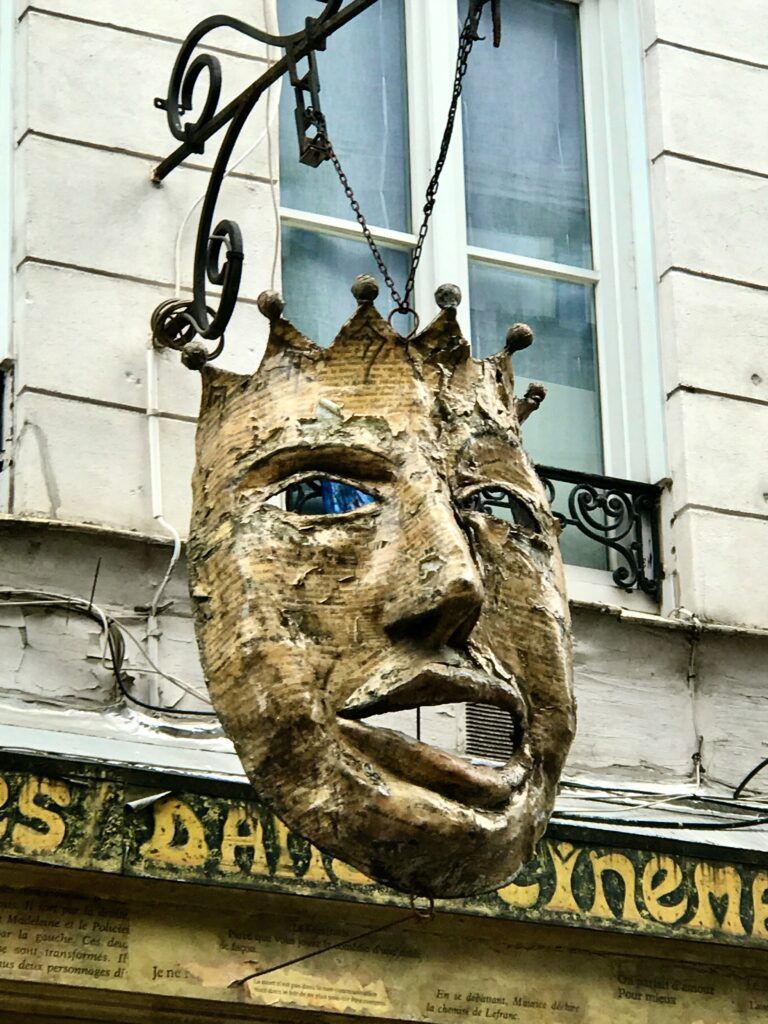
I hope you’ve enjoyed my one day in Lille itinerary. You may find these Paris travel guides useful.
- 5 Day Itinerary for Paris
- 3 Day Itinerary for Paris
- 2 Day Itinerary for Paris
- Tips for Planning a Trip to Paris
- Top Attractions in Montmartre
- Top Attractions in the Latin Quarter
- Top Attractions in the Marais
- Best Museums In Paris
- Hidden Gems in Paris
Pin it for later.

